Introduction of Hollow Bricks
Important Point
Bricks are one of the most essential and commonly used Building units in the construction world after cement.
Traditional bricks are widely used in the construction of Buildings. Nowadays there are many innovations and research is going on in the construction industry to develop innovative and cost-effective Construction materials which have more advantageous and economical as compared to traditional building materials.
In this article, we will see about hollow bricks and it’s Advantages and Disadvantages. The Hollow brick is the new innovative building unit which is becoming popular of its various uses. Hollow bricks Construction is eco-friendly in nature and does not create any pollution in nature.
Also Read: Ferrocement Structures
What Are Hollow Bricks?
Hollow bricks are also known as porotherm bricks. It is a new age brick which is widely gaining popularity in the construction industry.
Hollow bricks are perforated either horizontally or vertically. The overall performance of the hollow bricks is very good as compared to the traditional bricks.
Hollow bricks are very easy to handle on-site and help in faster construction. They are environment friendly and absorb less amount of water as compared to the traditional clay bricks.
Because of its low Absorption of water, there are very few chances of efflorescence on the hollow brick walls. Hollow bricks help to improve the aesthetical beauty of the structure and gives a better view and surface as compared to the Construction of traditional bricks.
Hollow bricks Construction is rated by the Green Building Council of India. Hollow bricks are eco-friendly Construction material which is manufactured by recycled waste and materials such as coal ash, rice husk, and fly ash.
The Hollow bricks are the innovative construction material which is a substitute to the traditional bricks which are used in the construction.
The main function of the hollow bricks is to reduce the dead load of the Structure because the hollow bricks are the most lightweight building materials. The holes or the pores present in the bricks help to reduce the weight of the brick and make it lightweight.
The Hollow brick wall is mostly used as the partition in the buildings but it is also used as the load-bearing walls as per the Compressive strength of the hollow brick.
The hollow bricks have the thermal insulation property which helps to reduce the cooling as well as heating effects as per the weather conditions.
The hollow space of the poles which are present in the hollow bricks is used to pass the plumbing as well as electrical wiring which is not possible in the traditional bricks.
The thermal insulation property of the hollow bricks helps to save resources and costs. It is because of the air present in the holes of the hollow bricks which helps the hollow bricks wall to keep the internal environment of the building cool in the summer whereas warm in winter.
The Thermal insulation of the hollow bricks is more as compared to the traditional bricks. The bonding capacity of the hollow bricks is very high because the concrete can be filled in the pores of hollow bricks which helps to improve its strength.
Hollow bricks provide uniform quality, faster construction, and less labour involvement and hence prove economical and cost-effective Construction material.
Advantage of Hollow Brick
They are various advantages of hollow bricks which are as follows.
- Hollow bricks are an eco-friendly construction material which does not lead to pollution.
- The hollow bricks help to reduce the cooling and heating effect as per the weather requirements due to its thermal insulation property.
- The hollow bricks help to conserve energy and resources.
- The hollow bricks provide good sound insulation property.
- Hollow bricks have good compressive strength so that it is used for the construction of the load-bearing walls.
- One of the best advantages of hollow brick construction that it is also used to pass the electrical as well as plumbing fixtures through its Hollow space.
- Hollow bricks are cost-effective and required very less maintenance.
- Hollow bricks have more fire resistance as compared to solid bricks.
Disadvantage of Hollow Bricks
There are also some disadvantages of the hollow bricks which are as follows.
- The load-bearing capacity of hollow bricks is a little low because of the pores as compared to the solid Bricks.
- One of the disadvantages of Hollow bricks is that it cannot be used in the construction of large structures and foundations of buildings.
- The hollow bricks are not suitable in the areas where the water table is high because the bricks cannot resist it because of its low density.
Uses of Hollow Bricks
Following are some of different uses of hollow bricks;
- Huge structures demand the building materials having less weight so as to reduce the superimposed load of the structure on soil, hollow brick is a common engineer’s choice in such circumstances.
- Hollow bricks are used to reduce the cost of construction by reducing the amount of mortar used.
- The manufacturing process of hollow brick is environment friendly, hence used in areas prone to pollution.
- Used when steel is to be reinforced within the masonry wall or similarly when electrical wires and plumbing fittings are to be passed through constructed walls.
- The use of hollow brick in boundary fences is cost-efficient.
- Hollow Bricks are used in constructions where the dead load imposed on the foundation is to be reduced.
Also Read: Low E Glass Benefits
Sizes of Bricks Blocks
The hollow bricks blocks are available in various sizes in the market but the commonly used sizes of bricks blocks are as follows
- 400 mm x 200 mm x 100 mm
- 400 mm x 200 mm x 150 mm
- 400 mm x 200 mm x 200 mm
- 400 mm x 200 mm x 300 mm
Hollow Brick Price
The price of hollow brick varies from place to place and also depending on the quality of brick i.e. the strength of brick. Overall, the price could also change depending on the purpose of use.
Bricks used for partition purposes cost less as compared to brick used for the load-bearing cause. Hence the price of brick varies due to its quality, strength, purpose, and area.
Hollow brick price varies from 0.3$ to 0.8$ or Rs. 25 to Rs. 50 depending on the brick property. But in general, the average cost of a hollow brick is between 0.4 to 0.7$ or Rs.30 to Rs.40 when it comes to cities.
How to Make Hollow Bricks?
- The hollow bricks are constructed with the help of clay. The hollow bricks have a plane surface such that it requires less amount of material for plastering.
- Hollow bricks have less density as compared to solid bricks because of the presence of holes in it which makes it less dense and lightweight.
- The hollow bricks are manufactured at site. First of all the raw materials are collected which is required for the manufacturing of the hollow bricks.
- The proportioning of the raw materials is done as per the requirement and it is properly mixed. If the hollow brick is made from cement then the material is mixed in the rotator.
- After proper mixing, the material is filled in the moulds of the hollow bricks and compacted properly such that there should not be any voids remain in it.
- Then the hollow bricks are kept in the water tank for 7 days for the purpose of curing. Now the hollow bricks are ready to use for the construction.
Properties of Hollow Brick
5 Properties of Hollow Bricks are below.
- Compressive Strength of Hollow Brick
- Sound Resistance of Hollow Brick:
- Water Penetration Resistance of Hollow Brick:
- Flexural Strength of Hollow Brick:
- Fire Resistance of Hollow Brick:
1. Compressive Strength of Hollow Brick:
Compressive strength of hollow brick can be reported on either a gross or net cross-sectional area basis, depending on how the value is to be used. The gross area compressive strength is used to determine compliance with ASTM C652, Standard Specification for Hollow Brick (Hollow Masonry Units Made From Clay or Shale) for purposes of durability and empirical design requirements.
The net area compressive strength is needed for structural computations in structural applications using rational design of masonry. An internal BIA survey conducted in 1994 showed that the range of compressive strength of 6 to 8 in. (152 to 203 mm) thick hollow brick based on gross cross-sectional area is between 2190 psi (15.1 MPa) and 12,795 psi (88.2 MPa), with an average compressive strength equal to 6740 psi (46.5 MPa).
More recent testing indicates hollow brick of 3- to 4-in. (76- to 102-mm) nominal thickness have similar compressive strengths as solid units of the same size.
Brick units generally have higher compressive strengths than other loadbearing masonry materials. This makes hollow brick particularly well-suited for reinforced masonry applications where the increased strength of the unit can allow thinner wall sections to handle the same loading.
2. Sound Resistance of Hollow Brick:
Because sound insulation increases with increasing wall weight, brick masonry provides very good sound penetration resistance. The sound transmission class (STC) rating is used to determine the sound insulation of walls.
Hollow brick veneer generally has an STC of approximately 40 to 45, slightly less than the STC of 45 for solid brick veneer of the same thickness.
The STC for through-the-wall brick units is typically calculated as a linear function of weight. A grouted 8-in. (203-mm) brick wall generally has an STC of approximately 50 to 55.
In the absence of test results for a particular wall, calculated values of STC ratings can be determined from the following equation:
STC = 19.6W 0.23 (Imperial) or 913.6W 0.23 (SI)
The STC rating is a function of the weight of the wall, W, expressed in pounds per cubic foot (kg/m3). This equation is a best-fit curve based on the average of historical test data.
3. Water Penetration Resistance of Hollow Brick:
The factors responsible for Water Penetration Resistance for Hollow Bricks are the materials, wall construction, and the workmanship used.
Drainage wall systems prove to be the best water penetration resistance to hollow brick walls. By proper detailing, including clean air spaces, through-wall flashing, and weeps proper water penetration resistance is likely to be excellent.
Hollow Brick delays and reduce dampness in masonry wall proving a good Water Penetration Resistance material providing low water leakage.
Cavity cells in hollow brick delay the appearance of dampness and also reduce the percentage area of dampness as compared to the solid bricks of the same size and property.
Same cavity cells are responsible for the less contact area with the mortar, resulting in the well water-resistant scenario. Hollow bricks are used as single–Wythe walls and designed to act as a variation of a barrier wall, depending on the thickness and mass of the materials acting as an obstacle to water penetration.
The single-Wythe wall design is not much good resistant to water penetration as that of drainage wall systems or multi–Wythe barrier wall systems and is not appropriate for some of the exposures.
4. Flexural Strength of Hollow Brick:
The flexural tensile strength of hollow brick masonry is influenced by mortar and unit configurations and the use of reinforcing steel.
Previous research has indicated that face-shell bedded hollow brick masonry exhibits a lower flexural tensile strength than solid brick masonry laid with the same mortar, fully bedded.
This is likely due to the relative thickness of the face-shell bedded mortar joints and the drying of the mortar before the hollow unit is laid (face-shell bedding has more surface area exposed to air relative to its volume than does a full mortar bed).
More recent research has indicated that the percentage of voids, ranging from approximately 22 to 35 percent, in nominal 4-in. (102-mm) brick has no significant effect on the flexural strength of the resulting fully bedded masonry prism.
5. Fire Resistance of Hollow Brick:
The excellent quality of brick as a fire-resistant material is well known. However, very few tests have been carried on the hollow bricks because of the acceptance that bricks are inherently a good fire-resistant material.
Bricks that are made of fired clays are excellent fire-resistant materials. Apart hollow bricks are less fire-resistant when compared to fired clay bricks.
Hollow Bricks
These Clay Hollow Bricks can be used for both load-bearing and Non-load bearing construction. Moreover, the offered Clay Hollow Bricks are highly durable in nature and extensively used in various suitable applications.
Advantages of Hollow Bricks
They keep the interiors cool in summer and warm in winter especially the ‘clay hollow bricks‘. They also provide more sound insulation as compared to solid bricks. Better usage and strength- Hollow bricks display good compressive strength making them suitable to install heavy wall compartments, cabinets, geysers, etc.
Also, Read: Top 20 AAC Block Company in India
Disadvantages of Hollow Bricks
- Hollow blocks have poor bearing capacity because the total mass of wall decoration materials is reduced, the load-bearing capacity is also reduced.
- It is very dangerous to hang heavy objects on such walls.
Hollow Bricks Wall
Walls constructed with an air space within the masonry termed hollow or cavity walls, are commonly used in modern. building construction as a means of protecting the wall against. rain passing through it, and enhancing the thermal insulation of. the wall.
Hollow Bricks Construction
Hollow bricks are bricks that have several holes in it. These bricks can be used to build both load-bearing as well as non-load-bearing walls. These bricks have been proven to be much more beneficial than traditional bricks. Hollow bricks are fire resistant and at the same time much safer than ordinary bricks.
Size of Bricks Blocks
Blocks are formed in steel molds and since the material is relatively stable, the size of the individual units can be controlled to within small tolerances. Bricks are generally made to a traditional size – 230mm long, 110mm wide and 76mm high.
Best Hollow Bricks for Sale
What to consider when looking for the best hollow bricks for sale:
- Quality
- Manufacturer Reputation
- Size and Dimensions
- Thermal Insulation
- Cost
- Sustainability
Affordable Hollow Brick Suppliers
Some general guidance on finding affordable hollow brick suppliers:
- Local Building Material Suppliers
- Online Directories
- Construction Forums or Communities
- Request Quotes
- Local Brick Manufacturers
Durable Hollow Brick Construction
Durable hollow brick construction refers to the use of hollow bricks as a building material to create long-lasting and sturdy structures. Hollow bricks, also known as concrete masonry units (CMUs) or cinder blocks, are made from concrete or a mixture of cement, aggregates, and water. The blocks are formed into rectangular shapes with hollow cores, which reduce their weight and provide space for insulation or other materials.
Hollow Brick Wall Installation Services
If you’re looking for hollow brick wall installation services, there are a few steps you can take to find professionals who can assist you. Here’s a general guide:
- Research and Gather Information
- Check for Licensing and Insurance
- Read Reviews and Testimonials
- Request Quotes and Compare Prices
- Schedule Consultations
- Evaluate Experience and Expertise
- Discuss Timelines and Contracts
- Make Your Decision
Fire-Resistant Hollow Bricks for Buildings
Fire-resistant hollow bricks are building materials designed to provide enhanced fire protection in construction. These bricks are typically made from special formulations of clay, shale, or other heat-resistant materials. They undergo specific manufacturing processes to enhance their fire-resistant properties.
Hollow Bricks Are Used For?
Hollow bricks used mainly for providing insulation against heat as the air acts as an insulator.
Hollow Brick Size
Hollow concrete blocks come in a variety of sizes, such as 100 mm x 200 mm x 400 mm, 150 mm x 200 mm x 400 mm, and 200 mm x 200 mm x 400 mm. These blocks are most commonly gray but can also be found in different colors, including tan and dark red.
Hallow Bricks
Hollow bricks, also known as hollow concrete blocks or hollow masonry units, are commonly used in construction for various purposes. They have cavities or voids inside them, which provide several benefits such as reduced weight, improved thermal insulation, and ease of handling and transportation.
Why Hollow Bricks Are Used for Construction?
Hollow bricks enable faster construction as they can be easily handled on the site.
Clay Hollow Bricks Disadvantages
Disadvantages of Clay Hollow Bricks
- Poor seismic property.
- It can not be used for foundation or slab because it cannot resist the pressure, it may fail.
- The water absorption is more so it can reduce its durability and strength.
- It can not be used as a load-bearing wall.
Why Hollow Bricks Are Used for Construction?
Hollow bricks are famous in construction because they are lightweight and easy to handle, which makes them ideal for use.
How to Make Hollow Bricks?
To make hollow bricks, you will need the following materials and equipment:
Materials:
- Cement
- Sand
- Aggregates (such as crushed stones or gravel)
- Water
- Hollow brick molds or forms
Equipment:
- Cement mixer or mixing trough
- Shovel or trowel
- Vibrating table or brick press (optional)
- Water source
- Curing area
Here are the steps to make hollow bricks:
- Prepare the mixture
- Fill the molds
- Compact the mixture
- Remove excess mixture
- Curing
- Final curing
- Allow sufficient curing time
Briefly Explain How Hollow Bricks Keep the House Interior Cool During Summer and Warm During Winter
Hollow bricks have air cavity which is an excellent insulator. This property keeps houses cool in summers and warm in winters.
Like this post? Share it with your friends!
Suggested Read –
- Earth Filled Dam
- Reinforced Bricks
- Standard Plumbing Pipe Sizes
- What Is Dressing of Stone | Types of Dressing of Stone
- Floating Slab Vs Monolithic Slab | What Is Monolithic Slab | What Is Floating Slab
- RCCFull Form | What Is RCC | Advantages & Disadvantages of Reinforced Cement Concrete | Properties of RCC | What Does RCC Stands for
- What Is a Cavity Wall | How to Build a Cavity Wall | Cavity Wall Detail | Cavity Wall Thickness | Cavity Wall Insulation Pros and Cons | Brick Cavity Wall
- What Is Oblique Drawing | Oblique Drawing Examples | What Is Oblique View | Oblique Projection | Oblique Shape | Cabinet Oblique | What Is Cavalier Drawing
- Which of the Following Is a Way That Slopes Fail | Types of Slope Failure | Geotechnical Failures | Types of Slopes in Geography | Causes of Slope Failure | Slope Stability
- What Is Pier and Beam Foundation | Advantages & Disadvantage of Pier and Beam Foundations | Pier and Beam Foundation Design | How to Build a Post and Pier Foundation
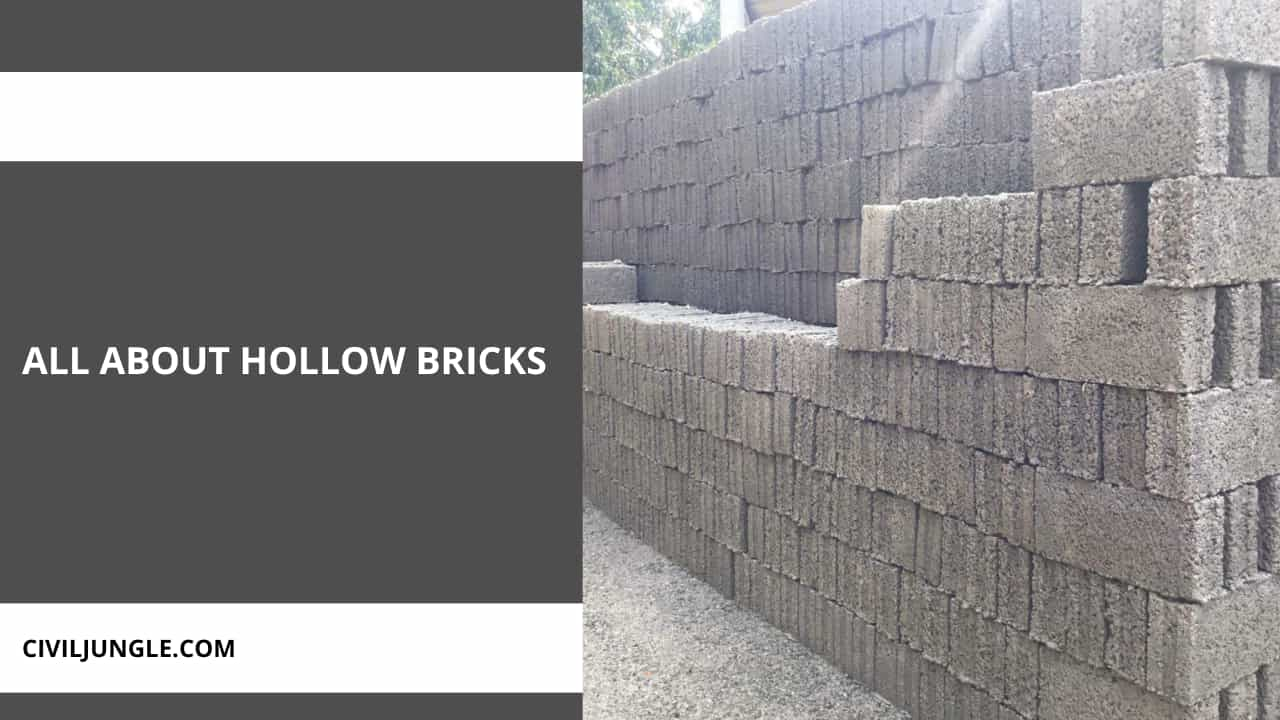
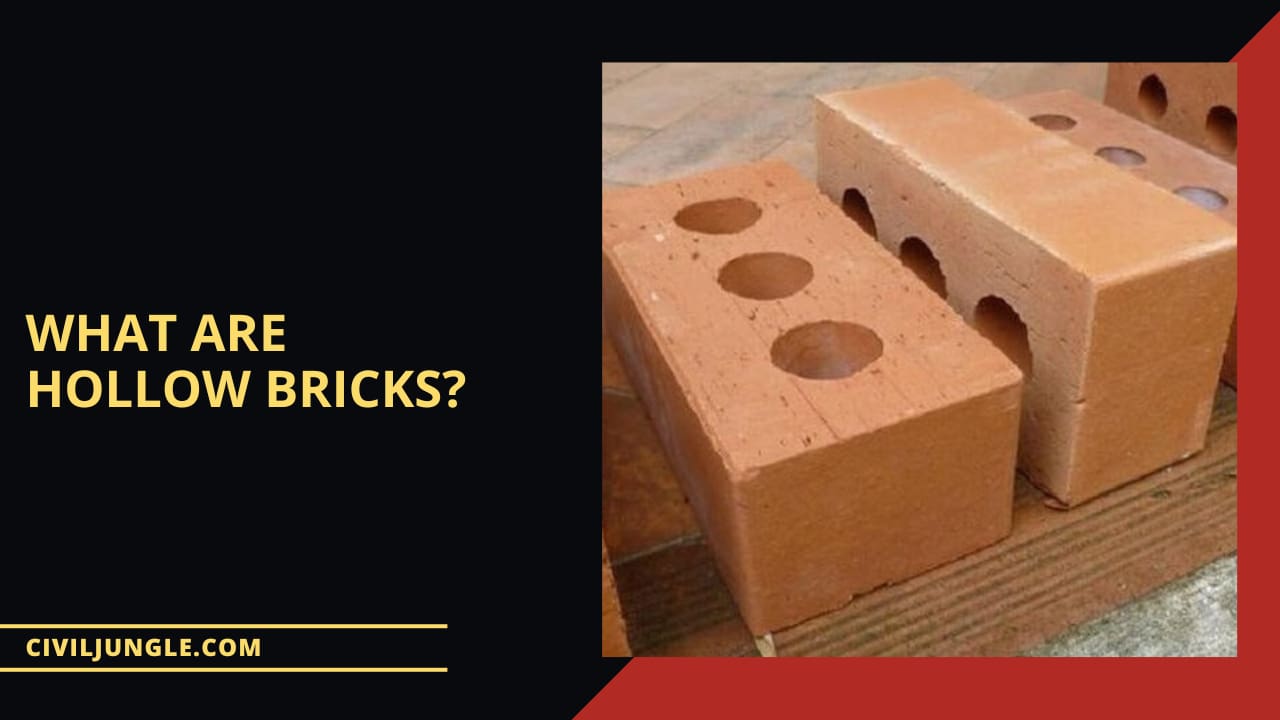
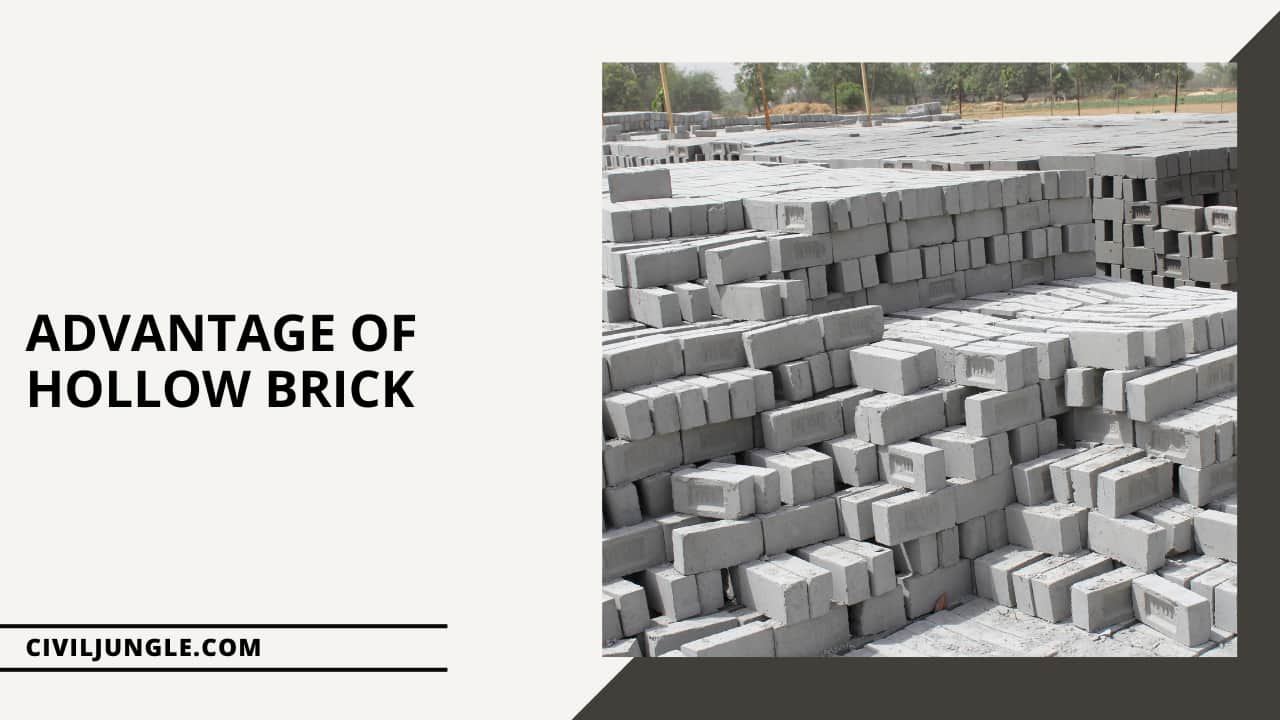
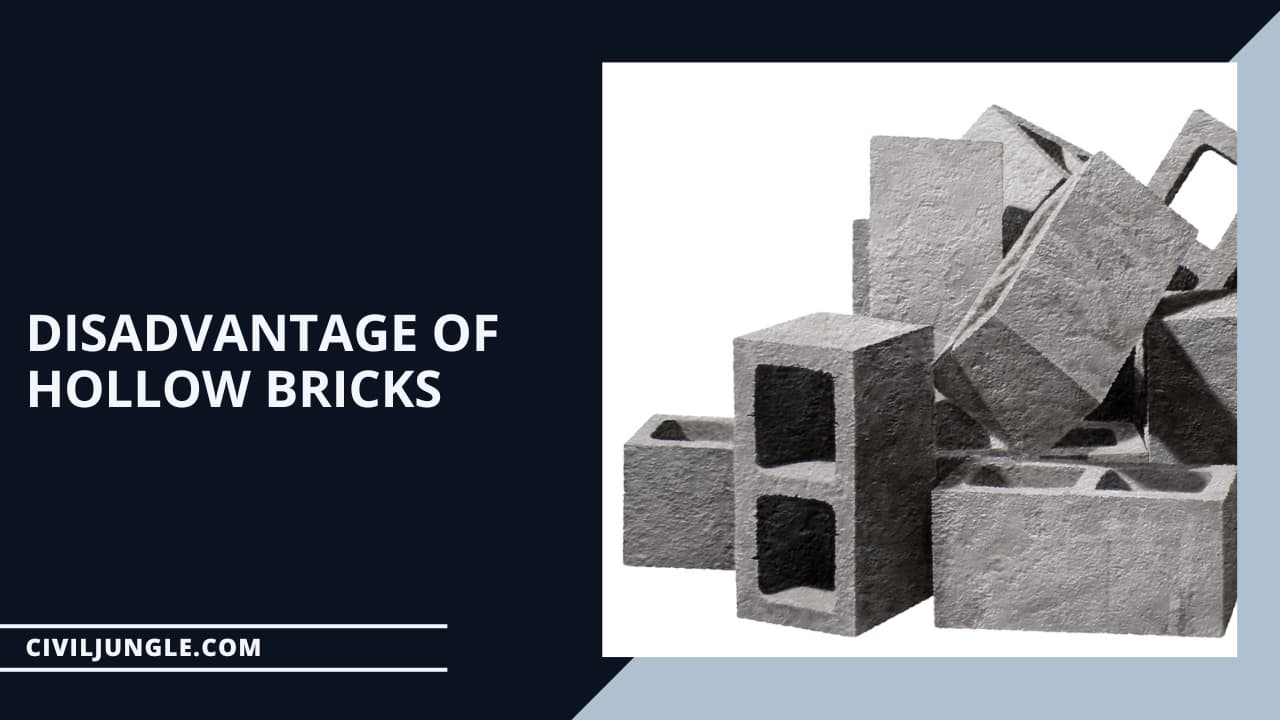
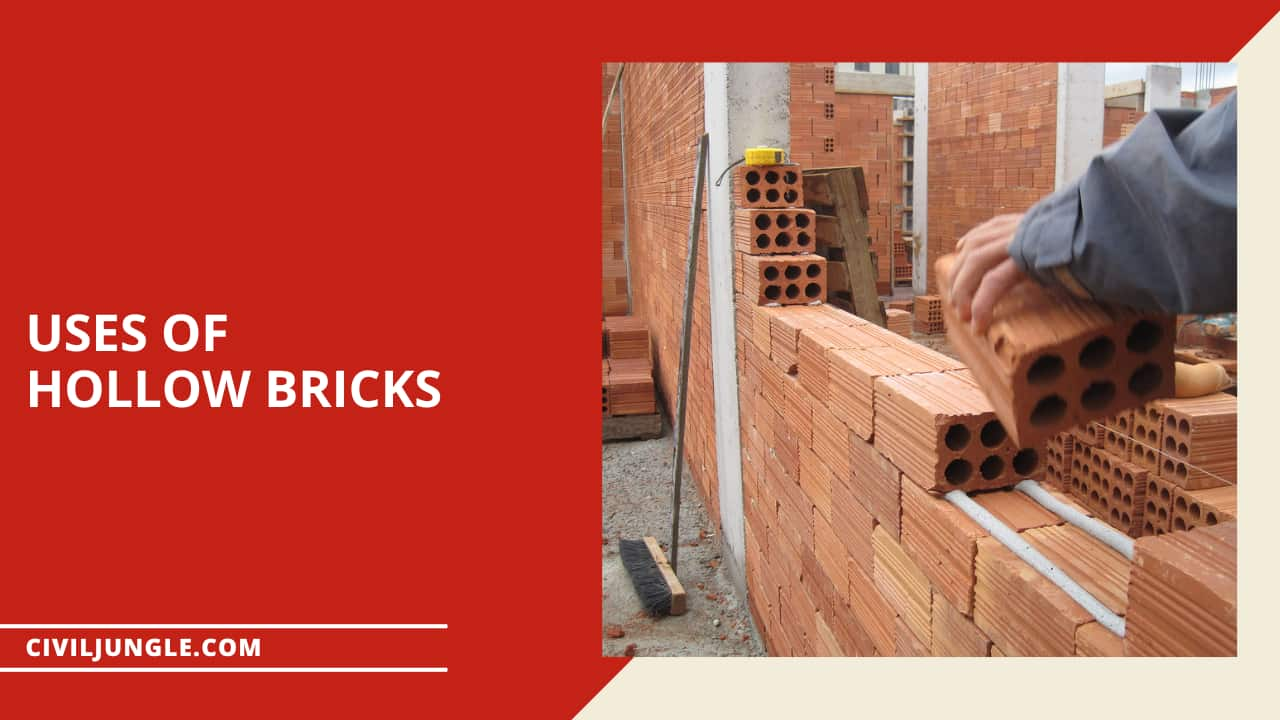
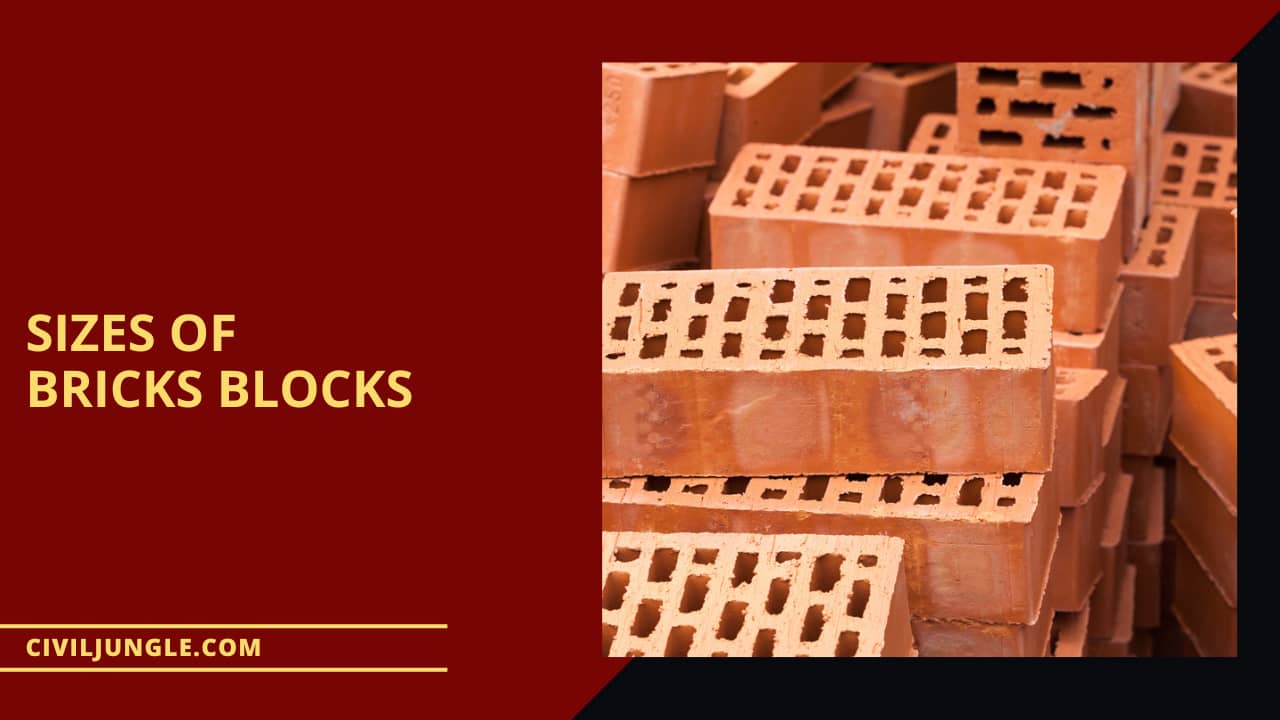
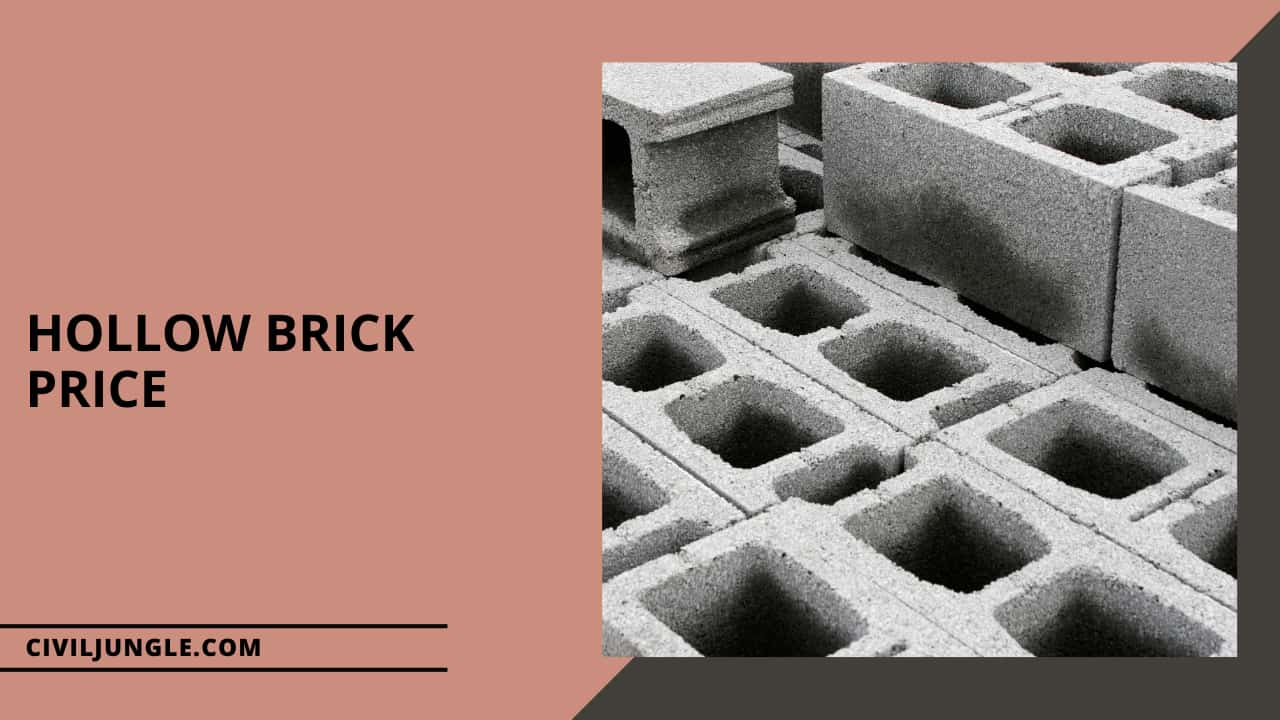
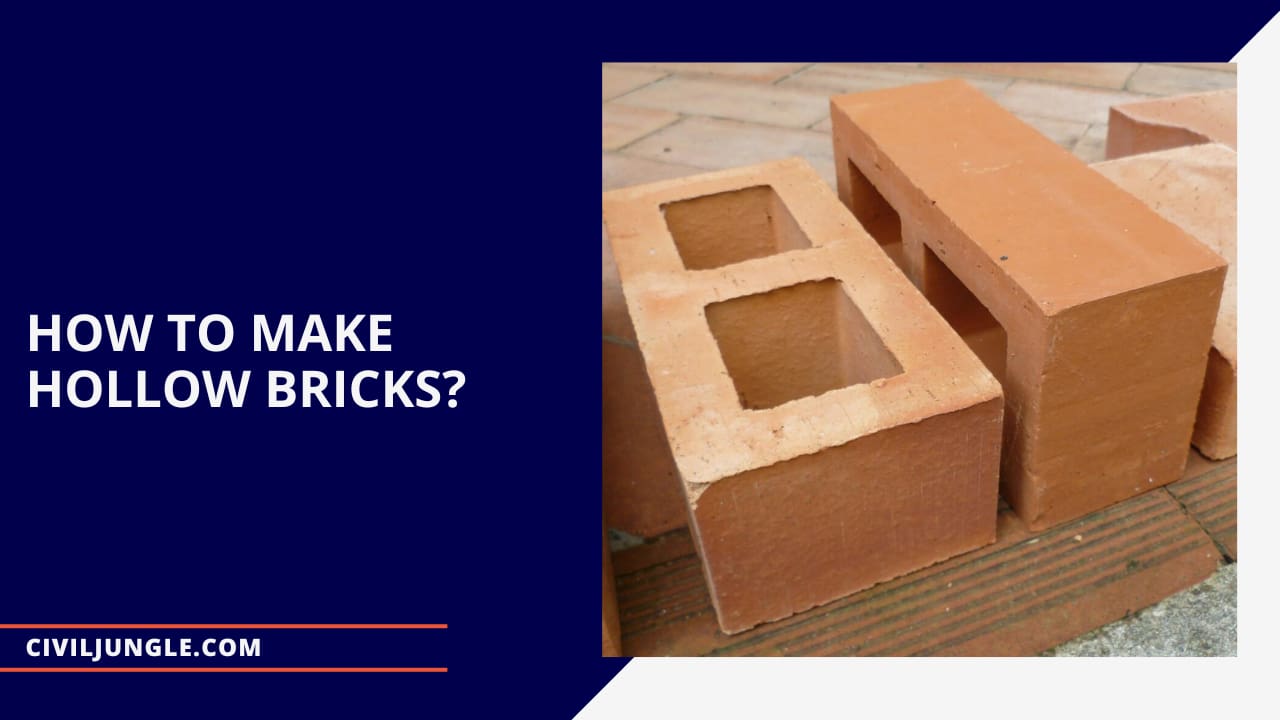
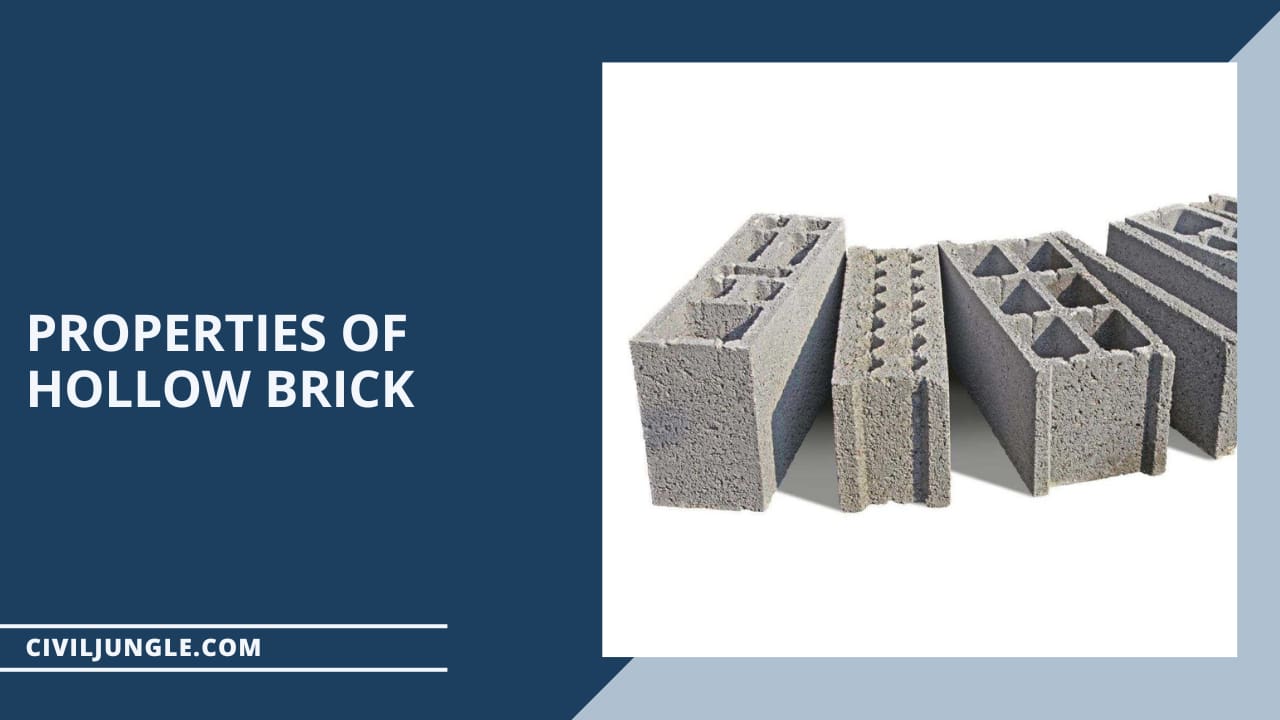
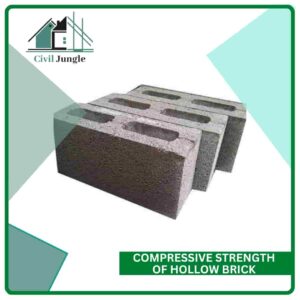
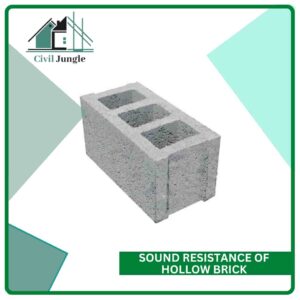
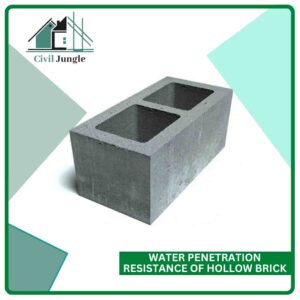
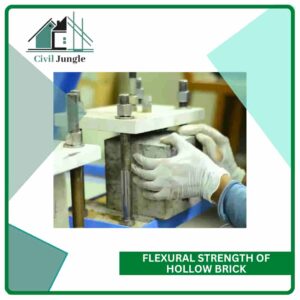
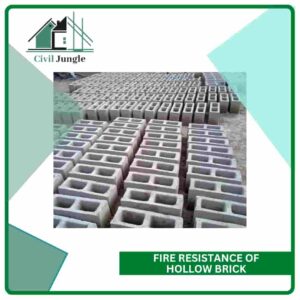

Excellent information. I wish you could include the machines for making the hollow bricks, or show the manual moulds for making the bricks.